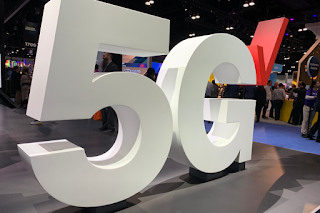Despite supply chain disruptions from the COVID-19 pandemic, sales of optical components and modules to cloud companies seem to remain on track, according to LightCounting's new 2020 Mega Datacenter Optics Report.
 The report provides sales projections of more than 50 product categories of Ethernet optical transceivers, DWDM optics, Active Optical Cables (AOCs) and Embedded Optical Modules (EOMs), segmented into three main applications: telecom, enterprise and cloud. The Cloud segment includes optics used inside the mega-datacenters of Cloud companies as well as in DCI routes.
The report provides sales projections of more than 50 product categories of Ethernet optical transceivers, DWDM optics, Active Optical Cables (AOCs) and Embedded Optical Modules (EOMs), segmented into three main applications: telecom, enterprise and cloud. The Cloud segment includes optics used inside the mega-datacenters of Cloud companies as well as in DCI routes.
"The COVID-19 pandemic brought in a new set of disruptions in early 2020. Many projects were delayed, including construction of new datacenters. Facebook postponed planned deployments of 200GbE until 2021, but ongoing deployments of 400GbE at Amazon and Google seem to remain on schedule and the market for Ethernet transceivers as a whole is expected to show modest growth in 2020. Demand for 100GbE optics from Chinese Cloud companies is likely to set a new record this year."
"With growing anti-globalization sentiment around the world, we expect that regional and national Cloud companies will take a lead in providing Cloud services. It will take many years for these companies to reach the scale of the leading American and Chinese Cloud giants, which translates to a bit slower growth for sales of optics to the Cloud segment. Emerging AI applications and growth in edge datacenters create additional demand for high speed optics, including AOCs and DWDM connections."
https://www.lightcounting.com/light-trends/sales-optics-cloud-companies-seem-be-largely-immune-covid-19/
 The report provides sales projections of more than 50 product categories of Ethernet optical transceivers, DWDM optics, Active Optical Cables (AOCs) and Embedded Optical Modules (EOMs), segmented into three main applications: telecom, enterprise and cloud. The Cloud segment includes optics used inside the mega-datacenters of Cloud companies as well as in DCI routes.
The report provides sales projections of more than 50 product categories of Ethernet optical transceivers, DWDM optics, Active Optical Cables (AOCs) and Embedded Optical Modules (EOMs), segmented into three main applications: telecom, enterprise and cloud. The Cloud segment includes optics used inside the mega-datacenters of Cloud companies as well as in DCI routes."The COVID-19 pandemic brought in a new set of disruptions in early 2020. Many projects were delayed, including construction of new datacenters. Facebook postponed planned deployments of 200GbE until 2021, but ongoing deployments of 400GbE at Amazon and Google seem to remain on schedule and the market for Ethernet transceivers as a whole is expected to show modest growth in 2020. Demand for 100GbE optics from Chinese Cloud companies is likely to set a new record this year."
"With growing anti-globalization sentiment around the world, we expect that regional and national Cloud companies will take a lead in providing Cloud services. It will take many years for these companies to reach the scale of the leading American and Chinese Cloud giants, which translates to a bit slower growth for sales of optics to the Cloud segment. Emerging AI applications and growth in edge datacenters create additional demand for high speed optics, including AOCs and DWDM connections."
https://www.lightcounting.com/light-trends/sales-optics-cloud-companies-seem-be-largely-immune-covid-19/



















